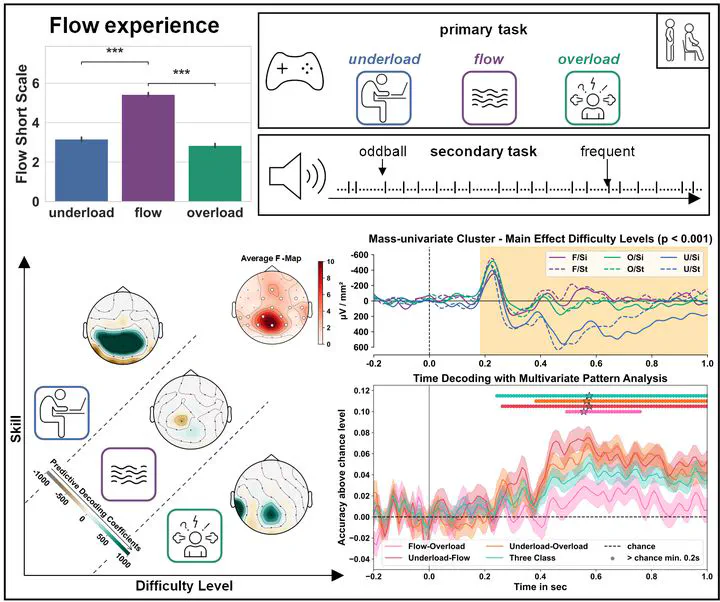Shielding the Mind With Flow: Attention Allocation and Auditory Event-Related Potentials Under Varying Mental Workload
Oct 1, 2025· ,,,·
1 min read
,,,·
1 min read
M.Sc. Katharina Lingelbach
Anna Vorreuther
Elias Moll
Mathias Vukelić
 Flow State EEG Analysis
Flow State EEG AnalysisAbstract
Attention allows individuals to prioritize and effectively process relevant information while ignoring task-irrelevant distractions. It plays a critical role in task performance, learning, and creativity. This study examines how varying levels of workload influence auditory attention, cognitive resource allocation, and the experience of flow. Thirteen participants engaged in a game-based electroencephalographic study designed to induce states of mental underload, overload, and flow. To assess available attentional resources, an implicit auditory oddball task was integrated as a secondary task. Spatiotemporal cluster analyses revealed significant differences in event-related potentials when comparing flow and overload to underload. Multivariate pattern analysis successfully decoded all three conditions above chance level, particularly in centroparietal regions. Subjective measures, including the NASA Task Load Index and Flow Short Scale, along with behavioral performance metrics, confirmed the effective induction of flow and distinct levels of workload. Notably, participants demonstrated significantly higher performance and subjectively perceived valence during the flow condition compared to the overload condition, despite similar levels of neural engagement. These results support the notion that the flow state may act as a “shielding mechanism,” enhancing the effective allocation of attentional resources and improving task engagement and performance efficiency.
Type
Publication
European Journal of Neuroscience, 62(8), e70283
This study highlights the cognitive and neural mechanisms of the flow state, using EEG-based measures to distinguish underload, flow, and overload conditions. Flow — characterized by deep task engagement and positive valence — acts as an attentional shielding mechanism. The findings are relevant for applied neuroergonomics, workplace design, learning environments, and mental health applications.